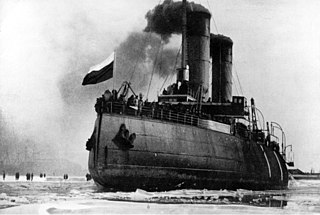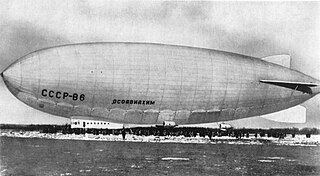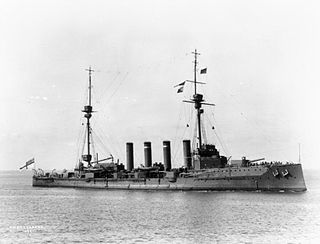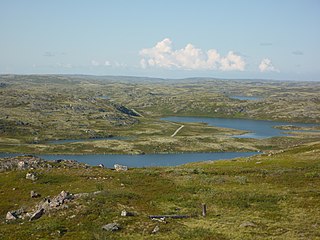| Sunk 500 | ||||
|---|---|---|---|---|
 | ||||
| Studio album by | ||||
| Released | 2000 | |||
| Genre | Nu metal, rapcore | |||
| Length | 37:53 | |||
| LOK chronology | ||||
| ||||
Sunk 500 is the second album by hardcore band LOK, released in 2000.
| Sunk 500 | ||||
|---|---|---|---|---|
 | ||||
| Studio album by | ||||
| Released | 2000 | |||
| Genre | Nu metal, rapcore | |||
| Length | 37:53 | |||
| LOK chronology | ||||
| ||||
Sunk 500 is the second album by hardcore band LOK, released in 2000.

Murmansk is a port city and the administrative center of Murmansk Oblast in the far northwest part of Russia. It sits on both slopes and banks of a modest ria or fjord, Kola Bay, an estuarine inlet of the Barents Sea, with its bulk on the east bank of the inlet. It is in the north of the rounded Kola Peninsula which covers most of the oblast. The city is 108 kilometres (67 mi) from the border with Norway and 182 kilometres (113 mi) from the border with Finland.

The Kola Peninsula is a peninsula located mostly in northwest Russia and partly in Finland and Norway. It is one of the largest peninsulas of Europe. Constituting the bulk of the territory of Murmansk Oblast, it lies almost completely inside the Arctic Circle and is bordered by the Barents Sea to the north and by the White Sea to the east and southeast. The city of Murmansk, the most populous settlement on the peninsula, has a population of roughly 270,000 residents.

Polyarny is a town and the administrative center of the closed administrative-territorial formation of Alexandrovsk in Murmansk Oblast, Russia, situated on the outermost western side of the Kola Bay. Population: 17,293 (2010 Census); 18,552 (2002 Census); 27,635 (1989 Soviet census).

Murmansk Oblast is a federal subject of Russia, located in the northwestern part of the country, with a total land area of 144,900 square kilometres (55,900 sq mi). Its only internal border is the Republic of Karelia to the south, and it is bordered internationally by Finland to the west and Norway to the northwest and the Barents Sea lies to the north and White Sea lies to the south and east. Its administrative center is the city of Murmansk. As of the 2010 Census, its population was 795,409, but at the 2021 Census this had declined to 667,744.

Yermak was a Russian and later Soviet icebreaker. It was the first polar icebreaker in the world, having a strengthened hull shaped to ride over and crush pack ice.

USS Milwaukee (CL-5) was an Omaha-class light cruiser built for the United States Navy during the 1920s. The ship spent most of her early career assigned to the Asiatic and Battle Fleets. In 1941, she was assigned to the Neutrality Patrol until she was refitted in New York in late 1941. She escorted a troop convoy to the Pacific in early 1942 before returning to the South Atlantic where she patrolled for German commerce raiders and blockade runners. In November, she intercepted one of the latter, but it scuttled itself before it could be captured. In 1944, she was temporarily transferred to the Soviet Navy and commissioned as Murmansk. The ship was returned by the Soviets in 1949 and sold for scrap in December.

SSSR-V6 OSOAVIAKhIM was a semi-rigid airship designed by Italian engineer and airship designer Umberto Nobile and constructed as a part of the Soviet airship program. The airship was named after the Soviet organisation OSOAVIAKhIM. V6 was the largest airship built in the Soviet Union and one of the most successful. In October 1937, V6 broke the world record for airship endurance previously held by the Graf Zeppelin; under the command of Ivan Pankow, the airship remained aloft for 130 hours 27 minutes.

Emperor Nicholas II Murmansk Airport is an international airport serving the city Murmansk in Russia. It is located near the town of Murmashi in Murmansk's southern suburbs, 24 kilometres (15 mi) outside the city centre. It serves as the airline hub for Smartavia.

HMS Cochrane was a Warrior-class armoured cruiser built for the Royal Navy in the first decade of the 20th century. She served in the 2nd Cruiser Squadron during the First World War under Rear-Admiral Herbert Heath, taking part in the Battle of Jutland in 1916. She was based in Murmansk in mid-1918 during the Allied intervention in the Russian Civil War. She became stranded in the River Mersey on 14 November 1918 and broke in two. The wreck was broken up in place by June 1919.

Pechengsky District is an administrative district (raion), one of the six in Murmansk Oblast, Russia. As a municipal division, it is incorporated as Pechengsky Municipal District. It is located in the northwest of the oblast, on the coast of the Barents Sea and borders Finland in the south and southwest and Norway in the west, northwest, and north. The area of the district is 8,662.22 square kilometers (3,344.50 sq mi). Its administrative center is the urban locality of Nikel. Its population was 38,920 (2010 Census); 46,404 (2002 Census); 59,495 (1989 Soviet census). The population of Nikel accounts for 32.8% of the district's total population.

Convoy PQ 8 was an Arctic convoy of the Western Allies to aid the Soviet Union during the Second World War. The convoy left Iceland on 8 January 1942. On 12 January the convoy had to turn south to avoid ice; the weather was calm, visibility was exceptional, with a short period of twilight around noon. and arrived in Murmansk nine days later.

Kolsky District is an administrative district (raion), one of the six in Murmansk Oblast, Russia. As a municipal division, it is incorporated as Kolsky Municipal District. It is located in the northwest of the oblast, partially lies on the Kola Peninsula, and borders with the Barents Sea in the north and Finland in the west. The area of the district is 27,600 square kilometers (10,700 sq mi). Its administrative center is the town of Kola. Population: 44,670 (2010 Census); 51,125 (2002 Census); 73,555 (1989 Soviet census). The population of Kola accounts for 23.4% of the district's total population.
The 14th Rifle Division was an infantry division of the Red Army. Formed in Moscow in 1922, the division spent most of the interwar period at Vladimir. After moving to the Kola Peninsula during the Winter War, the division fought on that front during the Continuation War. After the end of the Continuation War it became the 101st Guards Rifle Division.

Arctic naval operations of World War II were the World War II naval operations that took place in the Arctic Ocean, and can be considered part of the Battle of the Atlantic and/or of the European Theatre of World War II.
German submarine U-286 was a Type VIIC U-boat of Nazi Germany's Kriegsmarine during World War II.
German submarine U-295 was a Type VIIC/41 U-boat of Nazi Germany's Kriegsmarine during World War II.
German submarine U-425 was a Type VIIC U-boat of Nazi Germany's Kriegsmarine during World War II.

Convoy QP 11 was an Arctic Convoy of the Second World War, made up of merchant ships returning from the Soviet Union to Britain after delivering their cargo. The convoy consisted of 13 merchant ships, escorted by 18 warships. The convoy was attacked by German destroyers and submarines, suffering the loss of one merchant ship as well as the light cruiser HMS Edinburgh. The Germans lost the destroyer Z7 Hermann Schoemann.

The Arctic Circle is one of the two polar circles, and the most northerly of the five major circles of latitude as shown on maps of Earth at about 66° 34' N. Its southern equivalent is the Antarctic Circle.

Aeroflot Flight 99 was a Tupolev Tu-124 operating a scheduled domestic passenger flight from Leningrad to Murmansk, both in the Soviet Union, which crashed while attempting to land on 11 November 1965. Of the 64 passengers and crew on board, 32 were killed in the accident, and many of the survivors sustained injuries.